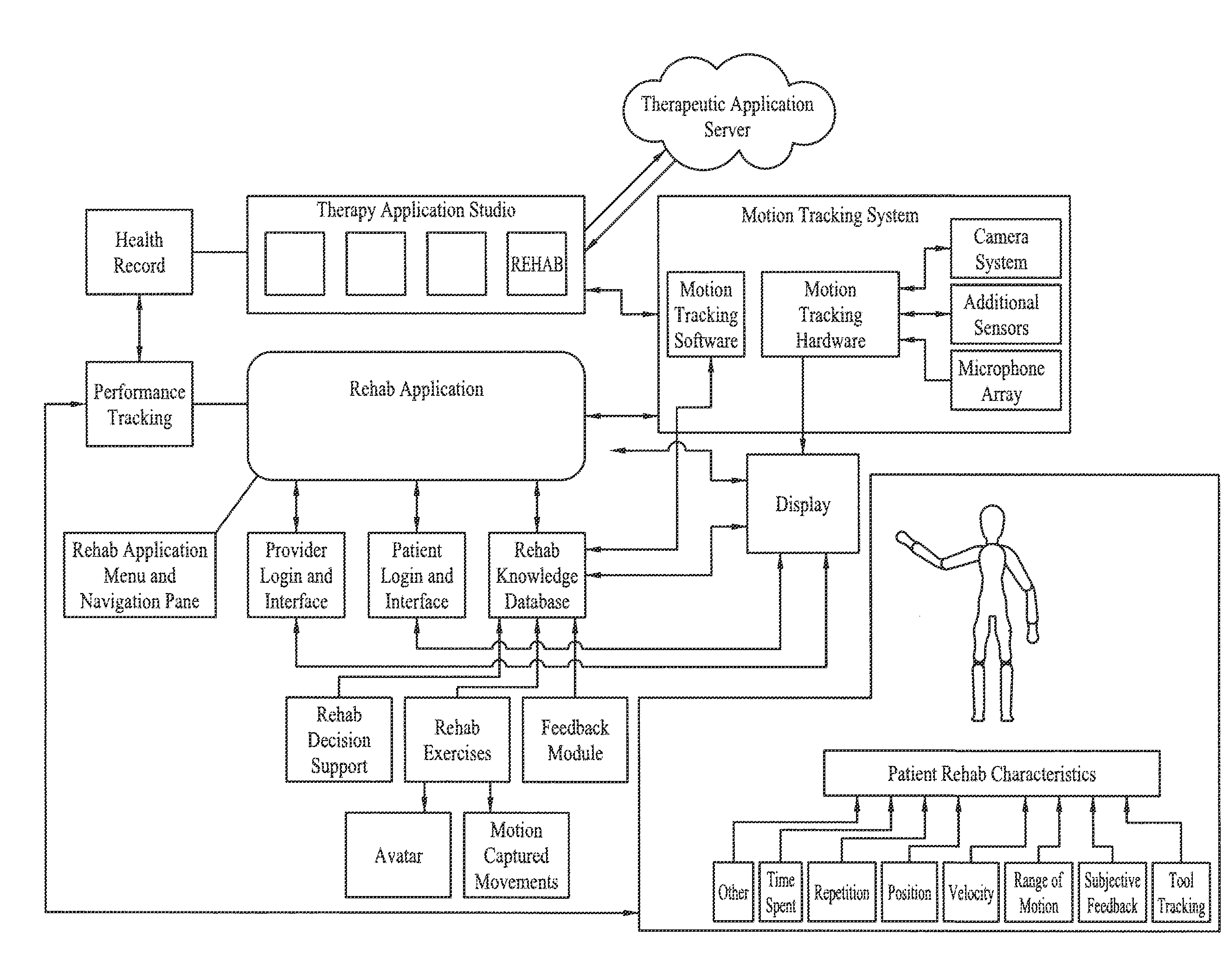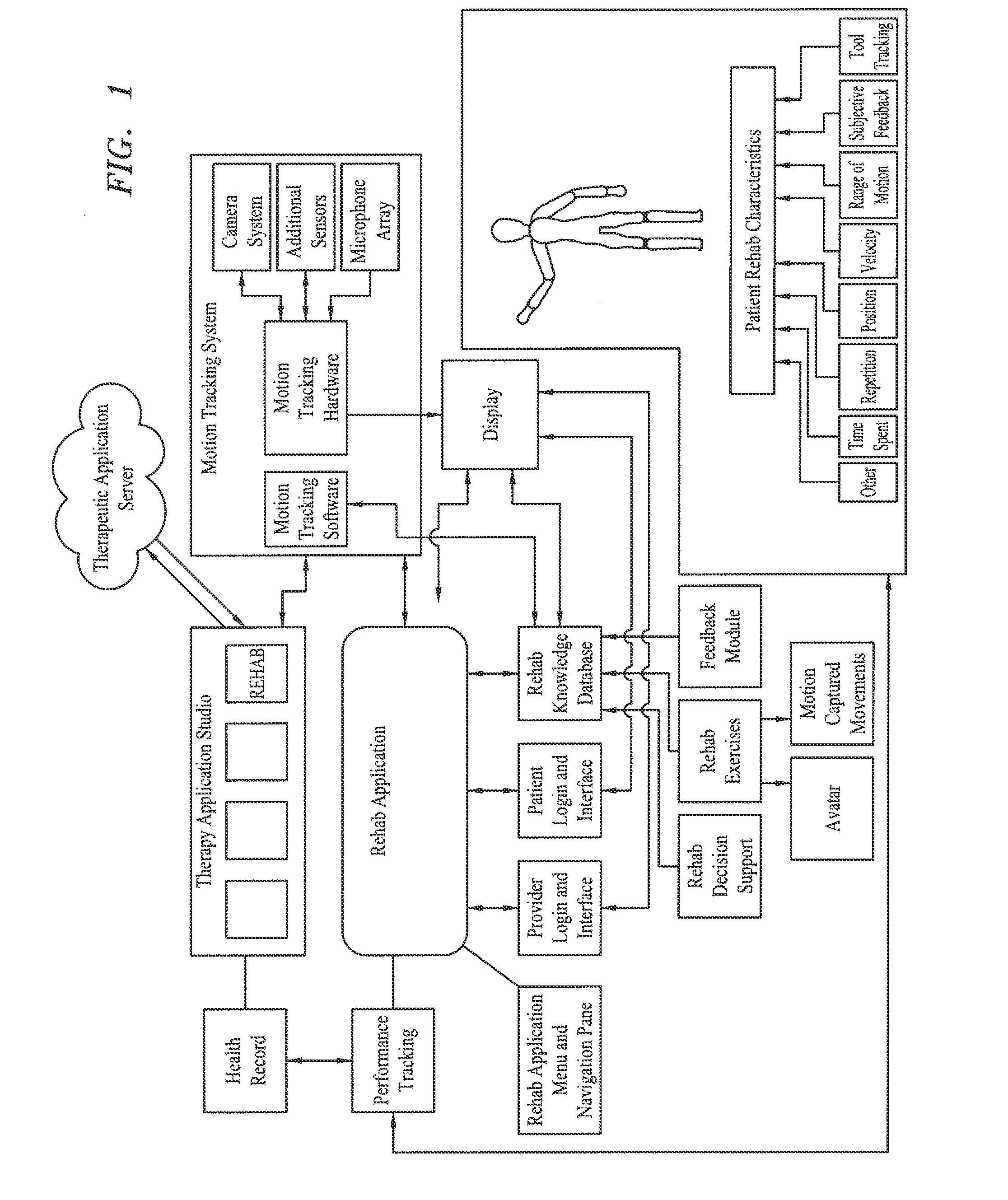Systems, apparatus and methods for non-invasive motion tracking to augment patient administered physical rehabilitation
a non-invasive motion and patient technology, applied in the field of monitoring the actions and positions of mammals, can solve the problems of preventing patients from engaging the current outpatient rehabilitation clinical network, significant challenges to current models of rehabilitation delivery and implementation, and inconvenient use of traditional rehabilitation, etc., to achieve accurate tracking
- Summary
- Abstract
- Description
- Claims
- Application Information
AI Technical Summary
Benefits of technology
Problems solved by technology
Method used
Image
Examples
Embodiment Construction
[0034]FIG. 1 provides a block schematic overview of key components of the system.
[0035]FIG. 2 is a perspective view of a therapeutic motion tracking system.
[0036]The motion tracking rehab system consists of several key components. The system includes a motion tracking system. Preferably, the components of the motion tracking system may include motion tracking hardware, motion tracking software, a camera system, a microphone array and additional sensors. Systems known to those skilled in the art include the Kinect system from Microsoft, the PrimeSense platform, or a system of one or more cameras coupled with motion tracking software. The motion tracking apparatus may either be with or without a depth sensor. The depth sensor preferably consists of an array of cameras and structured light that is able to image and assess the environment and discreet objects within three-dimensional space within its field of view. Objects within that field of view can be assigned a depth and size that ...
PUM
 Login to View More
Login to View More Abstract
Description
Claims
Application Information
 Login to View More
Login to View More - R&D
- Intellectual Property
- Life Sciences
- Materials
- Tech Scout
- Unparalleled Data Quality
- Higher Quality Content
- 60% Fewer Hallucinations
Browse by: Latest US Patents, China's latest patents, Technical Efficacy Thesaurus, Application Domain, Technology Topic, Popular Technical Reports.
© 2025 PatSnap. All rights reserved.Legal|Privacy policy|Modern Slavery Act Transparency Statement|Sitemap|About US| Contact US: help@patsnap.com



